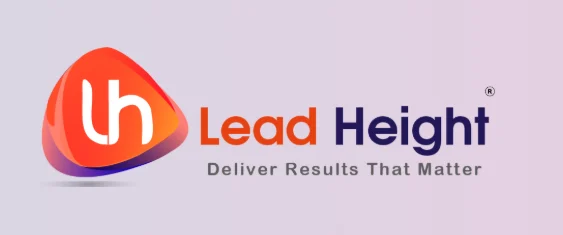Google Core Updates have had a substantial historical impact on website ranking and how search results matched user intent over the years, since 2011. They are breakthrough changes in the Google algorithm updates affecting businesses, marketers, and SEO professionals all over the world. It is important to understand these updates to maintain and improve website rankings, adapt to shifts in Google’s ranking algorithm, and create content that remains optimized during future Google SEO updates.
In this ultimate guide, we provide a deep dive into each of the significant Google Core Updates how the Google search algorithm has developed over the years — and what businesses can do to adapt to these changes and maintain a position in search results.
Google Algorithm Updates Timeline (2011–2025)
2011: Google Panda
The Google Panda update marked the first significant shift in Google’s search engine algorithm. It targeted low-quality sites, content farms, and websites with excessive advertising. Websites with thin or duplicate content saw their rankings plummet, while high-quality, informative pages experienced growth. Content marketers began prioritizing originality, relevance, and depth to comply with this algorithm update.
2012: Google Penguin
This update aimed to penalize websites engaging in manipulative link-building tactics. It reinforced the necessity for natural backlink profiles, affecting numerous sites that had relied on spammy link-building techniques. The Google algorithm list now favoured organic and high-authority links over artificial backlinks.
2013: Hummingbird
The Google algorithm for SEO took a massive leap with Hummingbird. It introduced a more intelligent way of interpreting search queries, emphasizing semantic search and user intent rather than mere keyword matching. This was a game-changer, as search engines started understanding context instead of just strings of words.
2014: Pigeon
This update revolutionized local search by improving how location-based queries were processed. The impact was most evident in Google’s Maps and local pack rankings. Businesses with optimized Google My Business profiles, strong local citations, and positive reviews saw increased visibility.
2015: Mobilegeddon
A critical algorithm update, Mobilegeddon prioritized mobile-friendly websites in search rankings. Sites that weren’t optimized for mobile devices saw a significant decline in visibility. This update underscored the importance of responsive design, page speed, and a seamless mobile user experience.
2016: Possum
Local businesses saw significant shifts with Possum, which enhanced proximity-based search results. The update aimed to diversify local search rankings by filtering out duplicate listings and improving the accuracy of location-based queries.
2017: Fred
Fred targeted websites that were overloaded with low-quality content and excessive advertisements. Websites prioritizing user experience and valuable content saw an increase in ranking. This further strengthened Google’s stance on rewarding sites that focused on helpful and authoritative content.
2018: Medic Update
This Google Core Update focused on health and YMYL (Your Money, Your Life) content, ensuring that authoritative, well-researched, and credible sources were ranked higher. Many healthcare, financial, and legal websites witnessed massive ranking shifts.
2019: BERT
Bidirectional Encoder Representations from Transformers (BERT) improved natural language processing, enabling the Google algorithm to understand the context of words in a query better. This enhanced search accuracy, especially for conversational queries and voice searches.
2020: May Core Update
The Google Core Update in May 2020 affected industries like health, finance, and eCommerce, emphasizing content relevance, authority, and expertise. Thin content and outdated information led to significant ranking declines.
2021: Page Experience Update
A pivotal Google SEO update, this algorithm refined ranking criteria by incorporating Core Web Vitals—focusing on loading speed, interactivity, and visual stability. Websites with slow-loading pages or intrusive pop-ups were negatively affected.
2022: Helpful Content Update
Prioritizing content genuinely valuable to users, this Google algorithm update penalized sites with unhelpful or AI-generated content lacking depth and originality. Websites creating user-first content benefited significantly.
2023: March Core Update
The March Google Core Update further refined content quality signals, enhancing user experience and rewarding original, insightful information. This update also had a strong emphasis on E-E-A-T (Experience, Expertise, Authoritativeness, Trustworthiness).
2024: AI-Powered Search Enhancements
This year’s Google updates on SEO leverage AI to better understand user intent, refine search rankings, and filter out low-quality content. Google’s ability to detect AI-generated spam has become more sophisticated, pushing for better content authenticity.
Google Algorithm Updates 2025: What to Expect
While Google Core Updates from 2011 to 2024 have reshaped search rankings, 2025 promises even more advanced enhancements. The expected focus will be:
- AI-driven content analysis
- Stronger emphasis on user intent
- Increased penalties for AI-generated spam content
- Enhanced privacy measures and data security within search ranking factors
- Advanced personalization of search results based on user behaviour
- Improved understanding of multimedia content, including images and videos
How to Adapt to Future Google Core Updates
1. Prioritize High-Quality Content
Content should be well-researched, engaging, and provide genuine value to users. Google’s page rank algorithm continues to reward sites with expert-level, insightful content.
2. Optimize for User Experience
Google’s search engine algorithm considers factors like loading speed, mobile-friendliness, and interactivity. A seamless website experience leads to better engagement and rankings.
3. Build a Strong, Natural Backlink Profile
High-authority backlinks remain a key ranking factor in SEO algorithms. Organic, well-placed backlinks help improve website credibility and search rankings.
4. Monitor Google Algorithm Changes
Staying updated with each algorithm update ensures swift adjustments to SEO strategies. SEO professionals should follow Google’s official announcements and industry discussions.
5. Focus on E-E-A-T Principles
Websites that demonstrate Experience, Expertise, Authoritativeness, and Trustworthiness continue to rank higher in Google’s ranking algorithm.
6. Enhance Multimedia and Visual content
Google’s algorithm for Google search is evolving to analyze images, videos, and interactive content more effectively. Businesses should focus on optimizing multimedia elements.
Understanding Google Core Update and Its Impact on SEO
Google frequently updates its search algorithms to enhance user experience and improve the quality of search results. One of the most significant updates that Google rolls out periodically is the Google Core Update. These updates can have a substantial impact on website rankings, traffic, and overall SEO performance. Understanding how core updates work and how to adapt to them is crucial for maintaining and improving search visibility.
What is a Google Core Update?
A Google Core Update is a broad change to Google’s search algorithms and ranking systems. Unlike minor updates that target specific aspects like spam or page speed, core updates influence rankings across a wide range of websites. The primary goal of these updates is to refine how Google assesses and ranks content, ensuring that users receive the most relevant and high-quality search results.
Google releases core updates several times a year, and while the exact details of the changes are not always disclosed, SEO experts analyze fluctuations in rankings to determine their impact.
Impact of Google Core Updates on SEO
Each core update affects websites differently, with some seeing a rise in rankings while others experiencing a decline. The impact generally depends on factors such as content quality, user experience, backlink profile, and technical SEO elements.
Content Relevance and Quality:
Websites with high-quality, well-researched, and authoritative content tend to benefit from core updates. Google prioritizes expertise, authoritativeness, and trustworthiness (E-A-T) when ranking pages.
User Experience:
Pages that offer better navigation, faster loading times, and mobile-friendly design are more likely to perform well after an update.
Backlinks and Authority:
Websites with a strong backlink profile from reputable sources usually maintain or improve their rankings.
Keyword Optimization:
Content that aligns with user intent and follows natural keyword optimization practices stands a better chance of retaining its ranking position.
How to Recover from a Core Update Hit?
If your website is negatively impacted by a Google Core Update, consider the following recovery strategies:
Audit Your Content:
Analyze pages that lost rankings and update them with fresh, high-quality, and relevant information.
Improve E-A-T Signals:
Demonstrate expertise and authority by adding author bios, citing reputable sources, and earning backlinks from trusted websites.
Enhance User Experience:
Ensure that your site loads quickly, is mobile-friendly, and offers an intuitive navigation experience.
Fix Technical SEO Issues:
Conduct a technical audit to address broken links, duplicate content, and indexing issues.
Monitor Performance:
Use tools like Google Search Console and Google Analytics to track changes and adjust strategies accordingly.
Conclusion
The evolution of the Google algorithm list over the past decade highlights its commitment to delivering high-quality search results. By adapting to each Google Core Update, businesses and SEO professionals can secure sustainable rankings in an ever-changing digital landscape. The future of SEO lies in creating valuable, user-centric content while aligning with Google’s algorithm updates 2025 and beyond.
If you want to take the Digital Marketing Course in Kolkata then visit Us – 99EEdu Institute.
Follow Us- on Facebook / Instagram.
Share on:
Quick Enquiry
Please fill up the form and we will get back to you in next 12 hours!


 5.0
5.0




